VamoTech and Technicalities.
CrowdStuck.
(7/25/24+)—With the click of a switch last Friday morning, cybersecurity company CrowdStrike struck a blow for global disruption and chaos—no cyberattack but a massive ‘friendly-fire’ operational glitch, widely advanced due to CS’s deep access into clients’ computer systems as a means of…safeguarding against malware, viruses, etc.
More specifically, the Austin, Texas tech outfit released a faulty software update installation that immediately caused perhaps the largest IT outage in history, crashing over 8.5m Microsoft OS based devices across business, governmental, healthcare industries worldwide that had been online at the time—not least air and airline transportation.
CrowdStrike did deploy a software fix within two hours, but that in turn required the manual rebooting and re-booting of each Windows-mode server, computer and other device. That 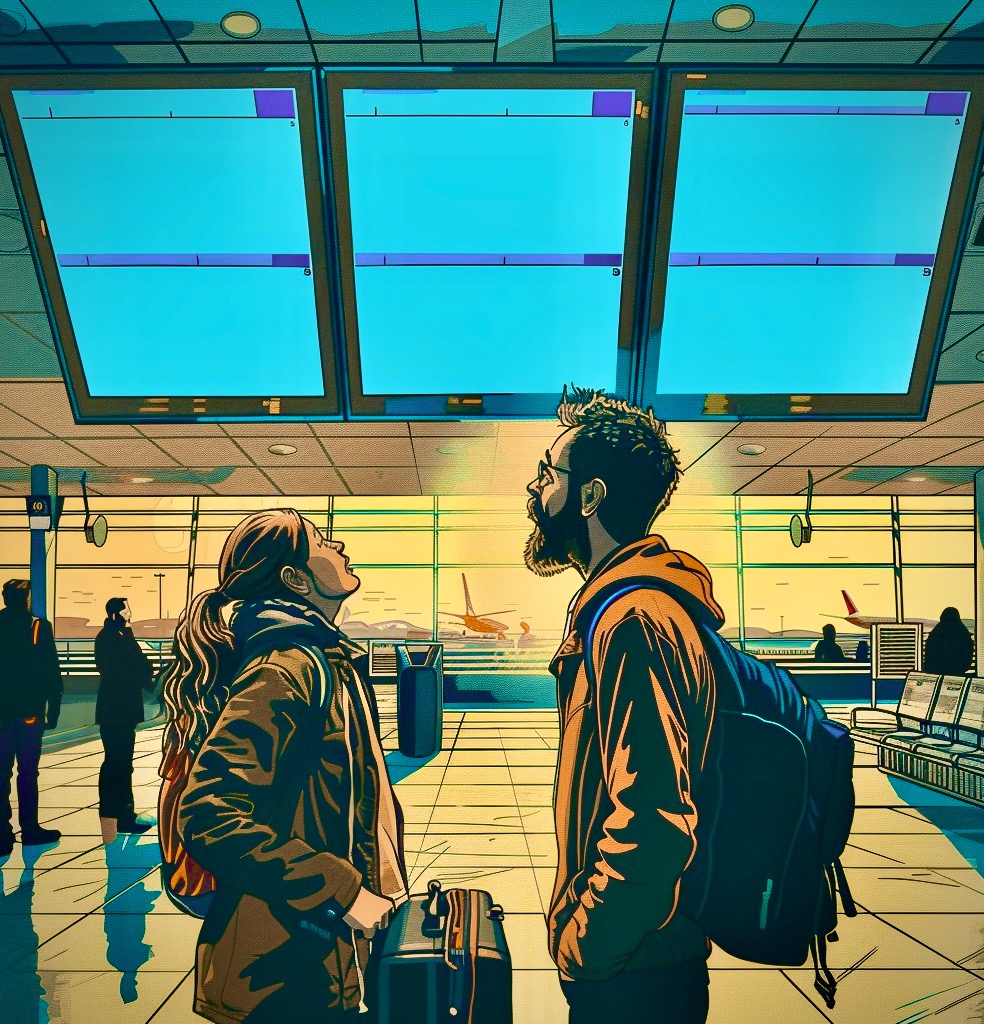 machine-by-machine process dragged on through the weekend, however, while the digital damage to airline operations spread the world over. Five days later, the crippling ripple effects continued to impact the industry and air travelers alike, to where the US Department of Transportation took serious notice.
machine-by-machine process dragged on through the weekend, however, while the digital damage to airline operations spread the world over. Five days later, the crippling ripple effects continued to impact the industry and air travelers alike, to where the US Department of Transportation took serious notice.
After the Strikeout.
By that Friday afternoon the interwoven freeze was on, flights grounded locally, globally. Some 9% of domestic US flights were cancelled, virtually all United Airlines planes; American and Delta fared little better, nor did lower-cost Spirit, Allegiant and Frontier. Internationally, carriers such as Qantas, Ryanair, Air France and Air Asia were also paralyzed. Waylaid travelers by the hundreds of thousands were left out in the cold, facing mass confusion and dreaded ‘Blue Screens of Death’ on terminal flight boards during these busy summer days—with terminal pain and strain spreading all weekend long.
Through Sunday, well over 6,500 US flights had been cancelled, 40,000+ delayed (CanDels) and counting, with myriad related ground stops galore. Airlines were left struggling to reset their bug-infected flight ops: scheduling, fleet/crew tracking and proper replacement/ repositioning, let alone customer reservation and check-in call centers.
But singularly stricken has been Delta, largely rated the premier, best-run US airline. The Atlanta-based carrier has cancelled over 7,000 flights since Friday—some 17% of its schedule daily, struggling to realign crews and aircraft throughout its system and restore flight schedules, even though planes were already widely overcrowded. Hence it now plans to sue CrowdStrike for damages to its ‘sterling’ on-time reputation—namely $.5bn in losses over the cyberstricken affair thus far.
(9/3/24)—Already navigating through higher operating costs, discount fare fights, a spoiled food flight and 29% lower Q2/24 profits, Delta has since cast blame far and wide. The companies (Microsoft included) have been been trading flak and reliability/liability claims ever since—centering on the speed and efficacy of CS’s software fix versus the airline’s ‘negligent rejection’ of the cyber firm’s de-bugging/recovery support.
By the same token, as with stalled passengers on other carriers, Delta’s customers have been bearing the brunt of CanDeled flights and on-again, off-again rebooking/rerouting. Customer service complaints against Delta’s operational meltdown and slow recovery mounted into the following week—to where Transportation Secretary Pete Buttigieg launched a formal investigation into the carrier’s consumer compensatory shortfalls, regarding communication and remedial notifications.
Whither the Blue Lumps?
Early ‘thea culpa’ claims that the tech/cyber glitch was not the airlines’ fault—that any responsibility landed at CrowdStrike’s door—were briskly dispelled by the D.O.T, which cited federal rules, with the FAA determining this outage was a controllable event. Thus US majors began waiving change fees and fare disparities on Friday’s cancelled flights. The airlines have since generally offered meal vouchers for customers delayed three+ hours, and covered lodging accommodations for those stuck overnight.
To receive the waivers, passengers had to rebook, and their new flights had to depart between Friday (7/19) and July 25, 2024, with tickets issued for the same cabin class and between the same cities/destinations as initially purchased. Customers deciding not to rebook on the next available flight were entitled to full refunds in lieu of vouchers and travel credits. Otherwise, forsaken travelers were reduced to blanketed ‘blue lumps’ sleeping it all off on airport  concourse floors. In any case, passengers were well advised to keep all boarding passes and expense receipts for reimbursement claims—say, once screens are fully rebooted.
concourse floors. In any case, passengers were well advised to keep all boarding passes and expense receipts for reimbursement claims—say, once screens are fully rebooted.
Curiously unaffected by this cyber bug were the DOT and FAA/air traffic control, as well as surface transportation, particularly rail service such as AMTRAK. Would that this were the case for France’s high-speed train lines on the Olympics’ opening day. Incidentally, Southwest Airlines, still reeling from its December 2022 fiasco, was also spared this time, likely owing to its Mac OS-based platform.
So glitch happens all right, but preferably not more often than not. Still, such global interconnectivity does have airlines by the technicals and travelers buggy whipped. Accordingly, Vamigré will continue to screen the monitors and monitor the screens, hoping to see that the cyber Crowd doesn’t Strike all over again. (MTC…)
Packing Yet More Heat.
(3/2/23)—Once again a lithium-ion (L-I) battery has caught fire inflight, this time on a Delta flight from Honolulu to Atlanta, Georgia Tuesday, 2/28. Turned out a flight attendant spotted smoke emanating from an overhead locker above rows 2-4; whereupon she put the fire out swiftly with a  halon fire extinguisher. She then placed an overheated laptop into a fire containment bag, watching it for any battery re-ignition until the plane safely landed in Atlanta. Reportedly, no passengers or crew were injured—still, the L-I fire threat looms larger by the fully packed flight and day. For the FAA cites 406 such fires between 2006 and 2022, 49 last year alone.
halon fire extinguisher. She then placed an overheated laptop into a fire containment bag, watching it for any battery re-ignition until the plane safely landed in Atlanta. Reportedly, no passengers or crew were injured—still, the L-I fire threat looms larger by the fully packed flight and day. For the FAA cites 406 such fires between 2006 and 2022, 49 last year alone.
What to do? According to the aviation agency, electronic devices and spare batteries should be stored snugly in carry-on, not checked bags. L-I terminals need be taped or otherwise shrouded to avoid contact with metal items, which could spark battery short-circuiting.
Nevertheless, if device-battery overheating/ignition occurs onboard, trained flight attendants should 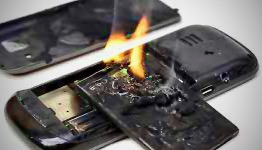 be summoned to extinguish the smoke and fire —if necessary, dousing said electronics in water to prevent additional battery cells from “reaching thermal runaway” possibly due to a misfiring electrolyte of organic solvents, oxygen-rich cathode and flammable gasses.
be summoned to extinguish the smoke and fire —if necessary, dousing said electronics in water to prevent additional battery cells from “reaching thermal runaway” possibly due to a misfiring electrolyte of organic solvents, oxygen-rich cathode and flammable gasses.
In any case, Lit runways, L-I runaways: not exactly a match struck about current IT or AI circles, much less U/L approved. So it may be better to simply charge up safely and carry-on. (MTC…) ☟
Cabin Fire, Battery Included.
(2/7/23)—Breaking news of an onboard fire forcing a United Airlines passenger jet bound for Newark, New Jersey back to San Diego International Airport fell alarmingly in our laps.
UAL Flight 2664, a 737 MAX 8, returned less than an hour after its 7:07 a.m. takeoff Tuesday morning, several people taken to a local hospital as a precaution, including four flight attendants who had suppressed the fire before it could spread, suffering smoke inhalation for their timely efforts.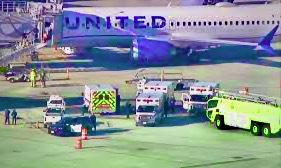
The cause was determined by FAA and San Diego Fire Department authorities to be a lithium-ion battery pack (likely for a laptop), that ignited in 2664’s First Class section. The ‘stews’ quickly stuffed that external device into a fire bag without further peril.
Incidentally, the flare-up comes at a time when FAA regulators seek to fine United over $1.1m for allegedly operating Boeing 777 jetliners without adequately checking their fire-detection capabilities on 102k flights between June 2018 and April 2021. FAA inspectors charge UAL with neglecting to maintain the fire-detection system ‘box’ in its preflight checklist, thereby compromising 777 safety/airworthiness. The aviation agency notes United’s own maintenance manual states that its flight crews must check the plane’s fire warning system at least once every 24 hours by clicking the “Fire/Overheat test switch.”
United counters that this checklist ‘box’ had been automated into the 777’s operating system by 2018, hence was redundant. Nevertheless, the carrier says it restored the fire-detention check in 2021—albeit after being busted by the FAA. The carrier has 30 days to formally respond to the agency’s notification, along with answering to earlier FAA enforcement of required inspection of some 24 777 wing slats, which it claims the airline had overlooked. The importance of such inspections becomes ever clearer upon viewing new video of an inflight engine fire on a Delta jet that was gaining altitude out of Scotland, bound for JFK. Loud banging and flames shooting back toward the plane’s wing flaps sent it emergency returning to Glasgow.
In any case, it seems like where there’s whistleblower smoke, there’s a hefty fine, if not fire in the contentious here and now. (MTC…)![]()
5G=Flying Blind?
![]() (Update 4/30/23+)—The 5G switch is on, with no major disruptions thus far. Mainly because telecoms have relented for a third time on the totality of their ‘next-gen’ wireless network rollout, delaying implementation near a “limited
(Update 4/30/23+)—The 5G switch is on, with no major disruptions thus far. Mainly because telecoms have relented for a third time on the totality of their ‘next-gen’ wireless network rollout, delaying implementation near a “limited 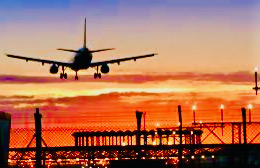 number of towers (near) certain airport runways”—more specifically, allowing for a minimum two-mile ‘buffer zone’ around them.
number of towers (near) certain airport runways”—more specifically, allowing for a minimum two-mile ‘buffer zone’ around them.
AT&T Inc. and Verizon Communications insist that the ‘breather’ is temporary, while blaming the FAA for failing to effectively pave the way for safely launching the C-band technology without harming aviation navigational services, as some 40 other countries have already done.
This latest holding pattern comes in the face of continued concerns posed by the agency, major US airlines and planemakers Boeing and Airbus. The telecoms counter that they have invested billions of dollars in high-speed 5G infrastructure, and imply that the government is painting worst-case scenarios, and has essentially ‘moved the goalposts’ for rollout approval due to ‘unforeseen’ aviation industry resistance.
For its part, the FAA (and White House) say they continue working on a safety solution to this cellular conversion static—asserting that the US is launching a far stronger 5G signal than those other nations, pointed more directly toward airport towers. Yet some telecommunications analysts counter that such aviation industry red flags are unwarranted, that sufficient C-band spectrum separation exists to circumvent interference with radar altimeters—even those on older aircraft.
Meanwhile airlines such as United contend, in a letter to the D.O.T., FAA and FCC, that this ‘haphazard’, commercially driven 3/4G-to-5G switcharoo may have a ‘catastrophic’ impact on aviation safety/ operations (i.e., mainly the 17 navigation/landing systems altimeters inform). Carriers raise prospects of ever more flight delays/cancellations, ripple effects causing “the nation’s commerce (to) grind to a halt.” The latest: An Airlines for America group of carriers is asking the FAA to extend its proposed deadline for retrofitting all aircraft altimeters against 5G wireless interference until June, 2024—so as to reflect industry ‘implemental limits and technicalities’. Nevertheless Transportation Secretary, Pete Buttigieg is now holding firm to a 5G implementation deadline of July 1, ready or not–certain commercial aircraft likely to be diverted from principal airports (Since done and done, 7/1).
Moreover, the specter of resulting (e.g., landing) restrictions, particularly in foul weather, has already prompted British Airways, Lufthansa, Emirates, Japan Airlines, Air India and ANA to jettison flights to most US airports, save for New York’s JFK, Los Angeles’ LAX and Washington, DC’s IAD—particularly in the wake of Boeing’s warnings as to their wide-body 777 jets’ altimeter vulnerability. Those carriers are now resuming service after FAA regulators backtracked on 777 altimeter susceptibility.
Technically speaking, Emirates’ execs are alarmed by US 5G networks being superpowered by riding faster radio-wave frequencies between 3.7 and 3.98 GHz (as opposed to Europe’s slower 3.4 to 3.8 GHz spectrum range)—deemed a skosh too close to the 4.2 and 4.4 GHz spectrum utilized by aircraft radar altimeters. Then there are these margin-of-safety issues: slimmer US buffer zones, and 5G antennae tilted vertically rather than more safely downward, as is primarily the case in other countries.
Otherwise, the FAA announced over the weekend that it has cleared “some 45% (now over 65%) of the US commercial fleet for low-visibility landings at many of the airports where (5G/C-band transmission) will be deployed”, after rapid testing and on-the-fly adjustments. The agency has also signed off on “two modified radio altimeter models installed on a wide variety of Boeing and Airbus planes.” Yet it admits some airports and flights may still suffer from disruptive ‘5G flu’. Aaachoo! (MTC…) ☟
(1/8/22)—Along those lines, a compromise just reached has telecoms’ delaying 5G rollout until January 19, thereafter dialing down in signal strength near airports on a six-month trial basis. This delay gives the FAA 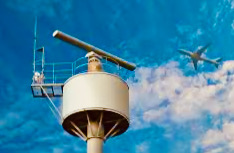 time to iron out some 5G wrinkles with the aviation sector, but also gives the telecom industry assurance than deployment can commence January 19 onward without government/aerospace interruption.
time to iron out some 5G wrinkles with the aviation sector, but also gives the telecom industry assurance than deployment can commence January 19 onward without government/aerospace interruption.
The stand-down, largely brokered with Transportation Secretary Pete Buttigieg’s assistance, seeks to avoid threatened litigation by the aerospace industry, and balance telecom’s higher-speed 5G service with federal/aviation concerns over unsafe cellular interference with cockpit safety systems (radar altimeter instruments). In on the negotiations were air safety regulators, telecom spectrum experts and aerospace engineers.
Yet to be finalized are details over the calibration of wireless signal strength near some 50 priority US airports, as well as the size and range of reduced signal ‘buffer zones’ surrounding them. Akin to similar 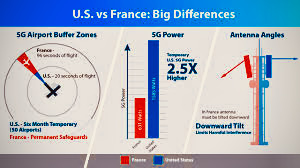 safeguards/governors implemented by French authorities, this agreement has been termed ‘reasonable’ by cellular powerhouses like Verizon and AT&T, which have invested billions of dollars in securing the airwaves and developing their 5G networks (providing smartphone speeds up to ten times faster than 3G and 4G iterations).
safeguards/governors implemented by French authorities, this agreement has been termed ‘reasonable’ by cellular powerhouses like Verizon and AT&T, which have invested billions of dollars in securing the airwaves and developing their 5G networks (providing smartphone speeds up to ten times faster than 3G and 4G iterations).
Still, certain aviation analysts foresee significant 5G air travel disruptions in the months ahead anyway, resulting in further flight diversions, delays and cancellations. Indeed, the FAA has already followed up with 1,300 official warnings intended to restrict pilots’ landing in foul weather—likely to fuel airline ‘de/can’ woes all the more…
(11/20/21)—What good is wireless inflight streaming at blinding speeds if the cellular signals are causing airliner pilots/cockpits to fly somewhat blind?
This is what the telecoms, aerospace/airline industry and government agencies will be hashtagging out as a December 5G (fifth generation) rollout deadline looms. More specifically, can aviation and 5G technology safely coexist?
At issue is whether utilization of the of the C-band spectrum of radio frequencies (3.7-4.2 gigahertz) for 5G cellular networks can adversely interfere with aviation equipment running on adjacent frequencies (4.2-4.4 GHz). These navigation systems assist in guiding planes landing in foul weather, as well as in preventing crashes and avoiding midair collisions.
So the automated features that help pilots fly aircraft could essentially be hampered by 5G wireless tower transmission. Aviation experts fear that certain 5G frequency usage could jam cockpit instruments such as radar 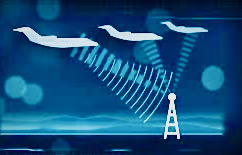 altimeters, which measure distance between the ground and airplanes aloft. As a result, those distorted altitude readings might create havoc with onboard flight control systems in the main.
altimeters, which measure distance between the ground and airplanes aloft. As a result, those distorted altitude readings might create havoc with onboard flight control systems in the main.
5G Wizardry vs. Flight Risk.
Although the telecom industry begs to differ. CTIA, a wireless trade group, claims that 5G cellular tech can safely use the C-band spectrum without “causing harmful interference to aviation equipment.” It points out that 5G can crank out internet speeds some 100 times faster than 3-4G for richer streaming, powerful new apps—even aboard an airliner in flight. Therefore any delay in activating this spectrum “risks American competitiveness, since over 40 other countries already employ 5G networks.” Moreover, some industry leaders go on to suggest that 5G may actually help warn pilots if/when their GPS is being hacked.
Conversely, aerospace and airline interests maintain that a rollout of 5G wireless can bring “major disruptions to the use of the National Aerospace System…”, and that the Federal Aviation Administration will be forced to “drastically reduce aviation operational capacity.”
FCC vs. FAA.
Similarly at odds are the respective government agencies. The Federal Communications Commission states that it is “committed to ensuring air safety while moving with…new technologies that support US business and consumer needs.” Some FCC officials hold that ‘available evidence’ does not show that 5G 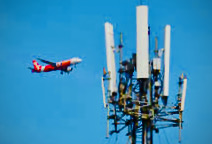 networks will hinder aviation, and that telecoms need more wireless spectrum space to fully operate 5G. FCC regs already afford protections such that wireless carriers must leave a C-band buffer between 5G signals and aviation frequencies.
networks will hinder aviation, and that telecoms need more wireless spectrum space to fully operate 5G. FCC regs already afford protections such that wireless carriers must leave a C-band buffer between 5G signals and aviation frequencies.
For its part, the FAA can hand down restrictions and post warnings to avoid flying in certain areas or under certain conditions. In this case, the agency says impeding or impairing radar altimeters could result in flight cancellations, diversions and delays in the nearly 50 metro areas equipped with 5G cellular towers. Moreover, any ‘straw man’ counter recommendations to retrofit the many thousands of radar altimeters with some sort of C-band filters could take years.
What is the Frequency, Kenneth?
That the two federal agencies are as at loggerheads over 5G as the telecoms and airlines is nothing new.
The FAA and FCC have previously tussled over data distribution, research effectuality and the gravity of potential safety risks—impacting their cooperative for expanding wireless networks while protecting aircraft operations and flight safety in general—all with the understanding that this issue has no bearing on consumer cellular phone usage.
These governing bodies are currently addressing this 5G issue and gathering further evidence and documentation. Meantime, their regulators may hand down more targeted warnings in coming weeks. The FAA may well issue a Special Airworthiness Information Bulletin or Airworthiness Directive regarding 5G ramifications, possibly imparting restrictions by December 3, effectively delaying this 5G network rollout in the name of public/flight safety—an oversight move backed by aerospace and airline industry groups.
Meanwhile, telecom companies press the FCC to expedite the launch of this 5G cellular service in early January. Their CTIA trade group cites the billions of dollars giants such as AT&T and Verizon have already invested—from spectrum licenses to network equipment upgrades—and that their critical acceleration payments/schedules must not be held hostage to open-ended FAA delays posed with “no scientific or engineering foundation.”
So the interagency game clock is ticking toward that early December showdown. Some sort of compromise is clearly in order. But the permanent FCC and Commerce Department regulator positions necessary to hammering one out remain unfilled, mainly owing to a slow Biden Administration nomination process, much less divided Senate confirmation.
Specific target date for the rollout: December 5, so Vamigré will be tuning in with increasing frequency until then. For how else will we travelers ascertain that our Hulu and Netflix gems stream more smoothly as we safely fly along the Jet Stream? (MTC…)
